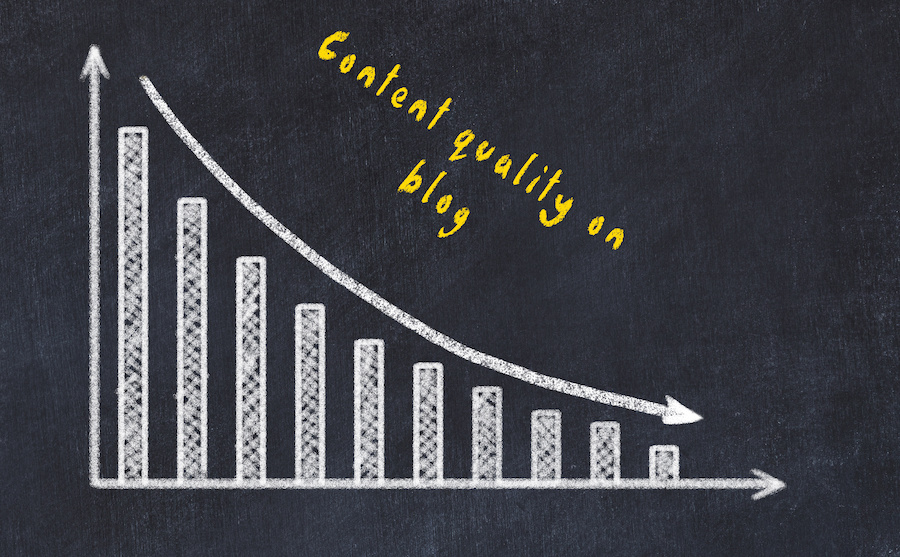Most of today’s marketers understand that video can boost SEO efforts. (If you’re a bit behind the times, check out this article to learn more about the link.)
At the same time, tons of content professionals post videos that violate SEO best practices. There’s no wrong way to create a video, but there are common mistakes that influence how your video will perform across search engines. So, if your goal is SEO success, it’s in your best interest to check for these issues.
Treat the five SEO mistakes below as a “what not to do” list for your next video—then stick around for our roundup of YouTube SEO best practices.
5 Common Video SEO Mistakes
1) Prioritizing keywords over your audience

We’re starting off strong with the cardinal sin of all SEO efforts: putting keyword performance above the audience experience.
It might seem like SERP rank is the only factor that matters, but at the end of the day, your content should resonate with your viewers. They can sense if you’ve scraped a video together just to force SEO results, and they’ll also know if you’re targeting keywords that don’t actually align with their interests.
Avoid this mistake by choosing keywords that have a high SEO potential and actually make sense for your brand. Your viewers will appreciate the consideration!
2) Skipping closed captions (CC) when you share

Next, make sure all your video content is published with closed captions.
In addition to making your content more accessible to audiences, it’s one of the ways that search engines index the page to learn what your video is about. The text transcript of your video provides context in a format that search engine algorithms use to determine your rank. Don’t skip this step!
If you need closed captioning guidance across a variety of distribution channels, reference this article for step-by-step instructions.
3) Distributing low-quality content

Still in the clear after the first two mistakes? You might be guilty of mistake #3: distributing low-quality content just for the SEO results.
Again, this is an issue of prioritizing your SEO performance over the viewer’s experience. However, the reality is that watch time and engagement are critical metrics for video SEO. If your content is blurry, glitchy, or otherwise thrown together with the scrappiest of resources, your keyword performance will reflect that.
Invest in the content creation process or post-production resources to avoid this issue, or turn your project over to a production company with invaluable industry expertise. They’ll know exactly how to get the results you’re looking for.
4) Ignoring your video’s analytics

Ignoring your video’s performance data is one of the most common SEO mistakes we come across. It’s tempting to think that once you’ve published your video and watched a few comments roll in, you can celebrate a job well done and close out the project. If that’s how you approach video production for SEO, you’re missing a huge opportunity to improve your outcomes over time.
Video analytics offer a treasure trove of information about what your audience wants to see, where you’re losing their interest, and what variables you might test over time. Make it a point to dig into your data on a regular basis to make changes—and hopefully boost results—in the future.
5) Making the same kind of video over and over

Last but not least, mistake #5 is a classic misunderstanding of the, “If it ain’t broke, don’t fix it” concept. There’s a lot to be said for learning what seems to work with your audience and committing to concepts that perform well. But if you’ve landed on one single video type and you’ve stopped experimenting altogether, you might be missing out on something even better.
It’s common for brands to keep producing the same basic product videos over and over, or to fill their YouTube channel with a dozen versions of the same tutorial content. Every once in a while, try a new video trend, test out a new video look or feel, or switch up your content some other way. You might just unlock a new avenue for SEO success.
YouTube SEO Best Practices
So, if the five situations above outline what not to do, what should you do when you post your next video? Well, if you want your video to serve your SEO strategy, apply these YouTube best practices before you hit “publish.”
– Use all the fields that are available to you
This is the single most important tip for video SEO: fill everything out to the best of your ability. Use the title text, description text, meta description, video tags, and text transcript fields to provide as much context for your video as possible.
When your video and its supporting text fields are all optimized for the same keyword(s), your SEO strategy will be much stronger than if you skipped these steps.
– Put time and thought into your thumbnail
Next, don’t rush through the process of creating your thumbnail—and don’t just choose the auto-selected version that YouTube provides by default. The goal is for your thumbnail and video title to work together to entice someone to watch. If you’re not quite sure how to master the balance between the two, use this articlefor more support.
– Guide viewers to the rest of your content
Before you hit publish, there’s one final step you should always complete: directing viewers to other pieces of content.
There are a few ways to do this. You can assign each of your YouTube videos to a playlist so other videos will auto-play after it, or you can use your video’s end cards to link to other resources you’ve created. No matter what you choose, keeping your viewers within your content ecosystem will help with SEO.
Final Thoughts
Video SEO can be hard to understand, but with a little time and attention, your videos will be perfectly poised for success. When in doubt, avoid the mistakes we’ve highlighted above and apply our YouTube best practices instead. And if you need more guidance, we’re always here to help!
The post Optimizing Videos for Search Engines: Key Mistakes to Avoid appeared first on Lemonlight.
* This article was originally published here

